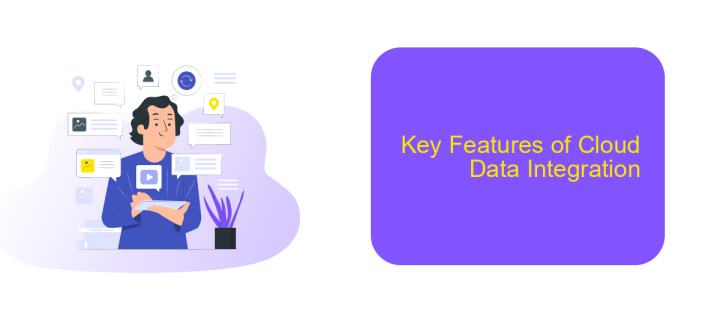Cloud Data Integration
Cloud data integration is a pivotal process in modern business operations, enabling seamless connectivity and unified data management across various cloud platforms. By integrating data from disparate sources, organizations can enhance their analytics, improve decision-making, and streamline workflows. This article explores the key benefits, strategies, and tools essential for effective cloud data integration, helping businesses to stay competitive and agile in a data-driven world.
Overview
Cloud Data Integration is a critical process that allows businesses to seamlessly connect various data sources and applications in the cloud. This integration ensures that data flows smoothly across different platforms, enabling real-time analytics, improved decision-making, and enhanced operational efficiency.
- Streamlined data management
- Real-time data synchronization
- Enhanced data accessibility
- Improved data quality and consistency
- Scalability and flexibility
Tools like ApiX-Drive simplify the process of cloud data integration by offering an intuitive interface and a wide range of connectors. These tools automate the data synchronization process, eliminating the need for manual data entry and reducing the risk of errors. By leveraging such services, businesses can focus on strategic initiatives while ensuring their data is always up-to-date and accessible.
Cloud Data Integration Concepts

Cloud data integration involves the seamless connection of various data sources and systems within cloud environments. This process ensures that data from different platforms, such as databases, applications, and services, can be accessed, combined, and managed efficiently. Key concepts include data synchronization, data transformation, and data migration. These processes help maintain data consistency, improve data quality, and support real-time data access across the organization.
One of the essential tools for cloud data integration is ApiX-Drive, a service that facilitates the automation of data flows between different applications and services. With ApiX-Drive, users can easily set up integrations without the need for extensive coding knowledge. The platform supports a wide range of connectors, enabling businesses to streamline their data processes and improve operational efficiency. By leveraging such tools, organizations can ensure that their data is always up-to-date and readily available for decision-making and analytics.
Benefits of Using Cloud Data Integration

Cloud data integration offers numerous advantages for businesses aiming to streamline their operations and enhance data accessibility. By leveraging cloud-based solutions, companies can efficiently manage and integrate data from various sources without the need for extensive on-premises infrastructure.
- Scalability: Cloud data integration platforms, like ApiX-Drive, allow businesses to scale their data operations seamlessly as their needs grow.
- Cost Efficiency: Utilizing cloud services reduces the need for significant upfront investments in hardware and maintenance, offering a more cost-effective solution.
- Real-Time Data Access: Cloud integration enables real-time data synchronization, ensuring that all stakeholders have access to the most current information.
- Enhanced Security: Cloud providers implement robust security measures to protect data, ensuring compliance with industry standards and regulations.
- Improved Collaboration: With cloud data integration, teams can collaborate more effectively by accessing shared data from any location.
Incorporating cloud data integration tools such as ApiX-Drive can simplify the process of connecting various applications and data sources. This not only enhances operational efficiency but also provides businesses with a competitive edge in today's data-driven landscape.
Key Features of Cloud Data Integration

Cloud data integration is essential for modern businesses aiming to streamline their data management processes. It enables the seamless connection of disparate data sources, ensuring that information flows smoothly across various platforms and applications.
One of the key features of cloud data integration is its ability to handle large volumes of data in real-time. This ensures that businesses can make timely decisions based on the most current data available. Additionally, cloud data integration offers scalability, allowing organizations to expand their data capabilities as their needs grow.
- Real-time data processing
- Scalability to handle growing data needs
- Enhanced data security and compliance
- Automated workflows and data synchronization
- Seamless integration with various data sources and platforms
Services like ApiX-Drive simplify the integration process by providing user-friendly tools that automate data workflows. This reduces the need for manual intervention and minimizes the risk of errors. By leveraging such services, businesses can ensure that their data integration processes are efficient, reliable, and scalable.
Best Practices for Implementing Cloud Data Integration
Effective cloud data integration requires a well-structured approach to ensure seamless data flow and consistency. Start by clearly defining your integration objectives and identifying the data sources and destinations. Prioritize data quality by implementing robust validation processes and monitoring systems to detect and resolve discrepancies. Utilize scalable and flexible integration tools like ApiX-Drive, which support a wide range of applications and services, enabling you to automate data synchronization and reduce manual intervention.
Security is paramount in cloud data integration. Ensure that all data transfers are encrypted and comply with relevant regulations and standards. Implement role-based access controls to restrict data access to authorized personnel only. Regularly review and update your integration workflows to adapt to changing business needs and technological advancements. Lastly, maintain comprehensive documentation and provide training for your team to ensure they are proficient in managing and troubleshooting integration processes effectively.
FAQ
What is Cloud Data Integration?
Why is Cloud Data Integration important?
How can I automate Cloud Data Integration?
What challenges might I face with Cloud Data Integration?
Can I integrate different cloud services easily?
Do you want to achieve your goals in business, career and life faster and better? Do it with ApiX-Drive – a tool that will remove a significant part of the routine from workflows and free up additional time to achieve your goals. Test the capabilities of Apix-Drive for free – see for yourself the effectiveness of the tool.

